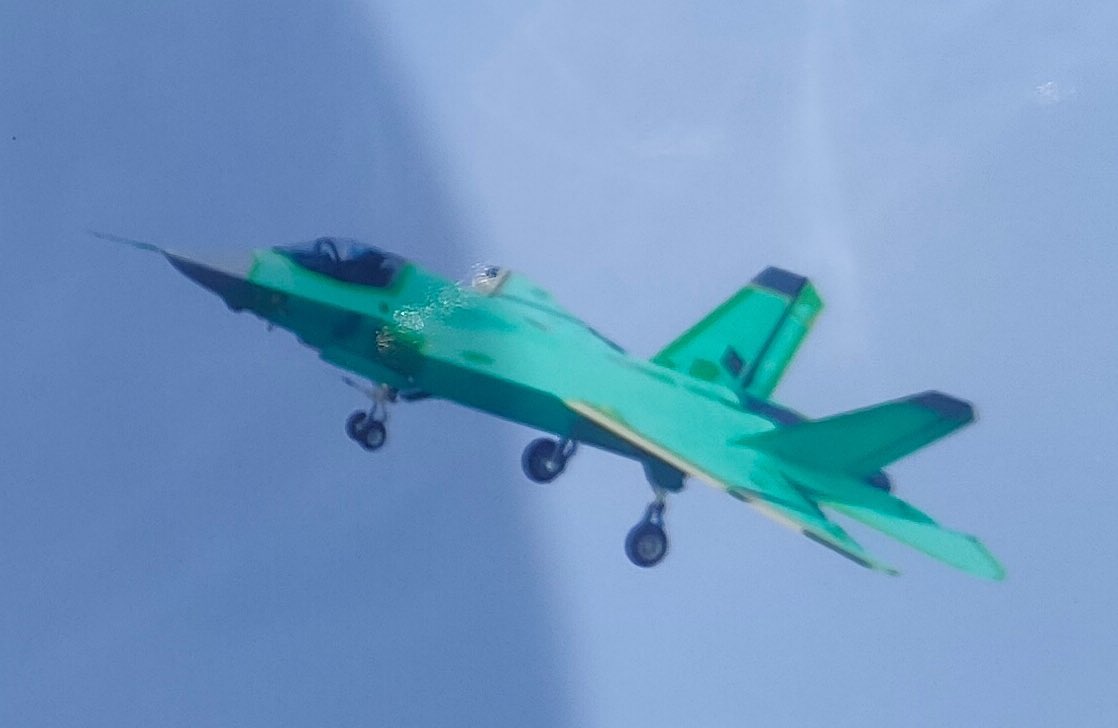The Chinese J-15 ‘Flying Shark,’ a carrier-capable fighter jet, is widely believed to be an unlicensed copy of the Russian Su-33.
Amid its efforts to become a military superpower, China’s defense sector, especially its aerospace industry, has been ‘copying’ designs of Western and Russian technology or accessing classified information illegally.
China’s PLA Navy (PLAN) currently operates the J-15, a 4th generation, twin-jet, all-weather, carrier-based fighter aircraft. The J-15 is seen as a provisional carrier-based fighter until a 5th-generation successor, which could be based on the J-20 or FC-31, is fully developed.
As reported by EurAsian Times, China is believed to have tested its first fifth-generation carrier-based aircraft, FC-31, in late 2021. The J-15 is mired in controversies because it is believed to be a copy of the Russian Su-33. China purchased an unfinished Su-33 prototype from Ukraine in 2001 and studied it thoroughly.
The communist country then produced its lone carrier-based fighter using this single airframe and some knowledge gained from the J-11 (another off-brand Sukhoi).
According to Sputnik, the J-15 is too large to function efficiently from carriers and has issues with its flight control systems, resulting in multiple crashes. At least on paper, the J-15 could be compared to America’s long-serving intercept fighter, the F-18.
Chinese military analysts believe a dogfight between the two jets would certainly result in a Chinese victory due to the faster top speed, greater maximum G-load, and somewhat higher operational ceiling.
Despite all the bragging, the J-15 is believed to be severely hampered by many tech issues. The inferior ramp system used to launch jets aboard China’s aging Liaoning carrier significantly limits the J-15’s maximum operational weight, restricting the amount of ordnance it can carry.
China’s Stealth Carrier-Based Jet
A series of photographs shared on social media has revealed the PLAN’s newest and most likely carrier-capable plane. The aircraft, which is thought to be a Shenyang J-31 derivative (also known as the FC-31), resembles its parent jet in appearance but has a few carrier-specific features.

The FC-31 is somewhat different from the larger and potentially better Chengdu J-20. For example, the J-31 is a smaller aircraft with a more traditional design that lacks the J-20’s forward canards.
This current FC-31 variant looks different from the previous two ones. To begin with, it has a larger, more durable set of wheels to withstand the pressures of carrier operations. Furthermore, its catapult launch bar demonstrates carrier landing capabilities. Finally, the latest FC-31 looks to have foldable wingtips and tail tips, resulting in a lower footprint for carrier missions.
Conceptually, the newest stealth fighter sits well with PLAN’s Type 003 aircraft carrier. The newest FC-31 would be PLAN’s second carrier-capable stealth aircraft and might fly alongside the J-15.
Russian Media Criticized J-15s
Sputnik News previously dug into the J-15’s troubles and made a sarcastic remark that “love for the fourth-generation J-15 fighter is rarely displayed in Chinese circles”.
“Chinese media have disparaged the plane in a variety of ways,” Sputnik added, “including making reference to it as a ‘flopping fish’ for its incapability to function efficiently from Chinese carriers, which deploy fixed-wing aircraft under their own power from an inclined ramp on the ship’s bow.”
Russian military analyst Vasily Kashin was quoted saying — the Chinese decided to save money and, rather than purchasing several Su-33s from Russia for later license manufacture in China, they opted to buy Su-33 prototype from Ukraine.
“As a result, the J-15 took longer time and more money than projected to develop, and the first planes were less reliable,” Kashin noted.
China has been copying Russian armaments for a long time; it bought Russia’s Su-27 fighter jets and S-300 missile systems in the 1990s. Beijing went on to create its own J-11 fighter jet and HQ-9 surface-to-air missiles based on these designs. Russia has taken a number of steps to put an end to the practice.
For example, it urged China to buy weapons in bulk rather than just a few samples, indicating that the arms were likely to be reverse-engineered. Russia also demanded guarantees against contract theft and even attempted to collect royalties from Chinese reproductions of Russian weapons. These steps, however, have been ineffective.
- Contact the author at ashishmichel(at)gmail.com
- Follow EurAsian Times on Google News